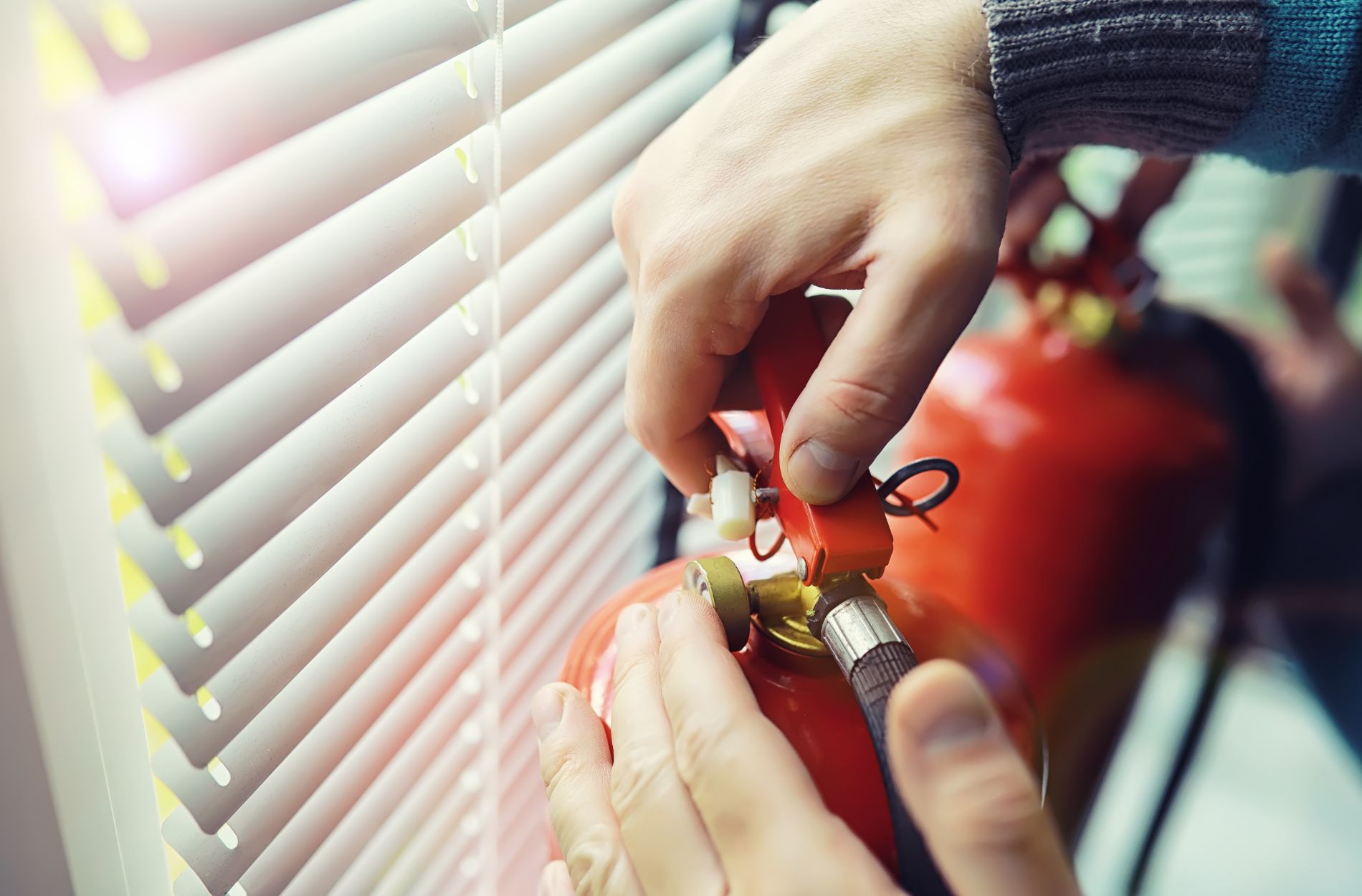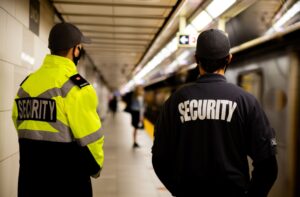Fire risk assessments are essential for ensuring safety in any building. They help identify potential fire hazards and outline steps to minimise risks. In Scotland, specific laws require that these assessments are conducted regularly. But can you do your own fire risk assessment, or should you always rely on professionals?
Many property owners and managers consider doing their own fire risk assessment to save on costs. Understanding what a fire risk assessment involves can help you decide if it’s something you can handle yourself. It’s essential to understand the steps and the responsibilities involved in this process.
Conducting your fire risk assessment requires attention to detail and a good understanding of fire safety principles. Missing or overlooking critical aspects can lead to severe penalties and increased risks. This guide will help you grasp the basics and walk you through the steps of performing your own fire risk assessment. It’s important to weigh the benefits and drawbacks before deciding to go the DIY route. This way, you ensure the safety of everyone using the building.
By the end of this article, you will have a clear idea of whether doing your own fire risk assessment is feasible for you. Understanding the necessary steps and potential pitfalls can make a significant difference in how you approach fire safety for your property.
Understanding the Basics of Fire Risk Assessments
A fire risk assessment identifies potential fire hazards and determines the safety measures needed to reduce risks. It is a legal requirement in Scotland for all non-domestic properties, including businesses, public buildings, and multi-occupancy residences. The main goal is to ensure the safety of everyone in the building by preventing fires and ensuring proper procedures are in place if a fire does occur.
The process begins with identifying possible sources of ignition, such as electrical equipment, heating systems, or open flames. It also includes recognising materials that could fuel a fire, like paper, cardboard, or flammable liquids. Understanding these basics is crucial for performing an effective assessment.
Another essential aspect is evaluating who might be at risk in the event of a fire. This includes employees, visitors, and contractors. Special attention should be given to individuals who might need assistance during an evacuation, such as those with disabilities or children.
By mastering these basics, you’ll have a solid foundation for conducting a thorough fire risk assessment. It’s vital to understand that this isn’t a one-time task but an ongoing process that requires regular updates and reviews to maintain safety.
Steps to Conducting Your Own Fire Risk Assessment
If you decide to conduct your fire risk assessment, follow these steps to ensure it’s thorough and compliant with regulations:
1. Identify Fire Hazards:
– Look for anything that could start a fire, such as faulty wiring, heating equipment, or flammable materials.
– Assess areas where fires could easily spread due to the presence of combustible materials.
2. Determine Who Is at Risk:
– Consider everyone who might be on the premises, including staff, visitors, and contractors.
– Pay special attention to vulnerable individuals like the elderly, disabled, or children.
3. Evaluate and Reduce Risks:
– Determine the likelihood of a fire starting and how severe it could be.
– Implement measures to reduce these risks, such as installing fire alarms, keeping flammable materials away from ignition sources, and ensuring proper storage of hazardous substances.
4. Record Your Findings:
– Document identified hazards, the people at risk, and the measures taken to reduce risks.
– Use this record to communicate with everyone who might be affected and ensure transparency.
5. Prepare an Emergency Plan:
– Develop a clear evacuation plan, including exit routes and assembly points.
– Ensure everyone is aware of the plan and conduct regular fire drills to practice it.
6. Review and Update the Assessment:
– Regularly review and update your fire risk assessment, especially after significant changes to the building or its use.
– Check that all fire safety equipment is maintained and in good working order.
Following these steps will help you create a safer environment for everyone using the building. Regular reviews and updates are crucial to address new risks and maintain a high level of safety.
Pros and Cons of DIY Fire Risk Assessments
Choosing to perform your fire risk assessment can come with both advantages and disadvantages. Weighing these pros and cons can help you make an informed decision.
Pros:
1. Cost Savings:
– Conducting your fire risk assessment can save money by avoiding professional fees. This is especially beneficial for small businesses with tight budgets.
2. Familiarity with Premises:
– You know your building and its unique risks better than anyone. This familiarity can help you identify specific hazards that an outsider might miss.
3. Flexibility and Control:
– Doing the assessment yourself allows you to set your schedule and control the entire process. You can ensure that all the necessary steps are followed without external influence.
Cons:
1. Lack of Expertise:
– Without professional training, you might miss critical hazards or misunderstand regulations. This can lead to incomplete assessments and potential safety breaches.
2. Time-Consuming:
– Conducting a thorough fire risk assessment takes time, which means diverting focus from other essential tasks.
3. Legal and Insurance Risks:
– Mistakes in your assessment can result in severe legal consequences and might affect your insurance coverage. Professionals often have insurance to cover mistakes; you may not have this protection.
By considering these pros and cons, you can decide if a DIY fire risk assessment is right for you or whether it would be more prudent to hire a professional.
FAQs about Fire Risk Assessments
Understanding fire risk assessments might raise several questions. Here are some frequently asked questions to help clarify common concerns:
1. Can Homeowners Do Their Own Fire Risk Assessments?
While anyone can perform a fire risk assessment, it is highly recommended for non-domestic properties to use a qualified professional for a more thorough and compliant process.
2. How Often Should Fire Risk Assessments Be Conducted?
You should review your fire risk assessment at least once a year or more frequently if there are major changes to the building or how it’s used.
3. What Training is Needed to Conduct a Fire Risk Assessment?
A good understanding of fire safety principles and legislation is crucial. Several training courses are available to help individuals become competent in conducting assessments.
4. What Are the Legal Requirements for Fire Risk Assessments?
Under the Fire (Scotland) Act 2005, all non-domestic properties must complete regular fire risk assessments. Failure to comply can result in heavy fines or imprisonment.
5. Can Businesses Use Checklists for Fire Risk Assessments?
Checklists can be helpful as part of the assessment process, but they should not replace a comprehensive assessment. They can guide you through the process but might not cover every unique risk.
These FAQs help clear up some of the confusion surrounding fire risk assessments, making it easier for you to understand what’s involved and how to stay compliant.
Conclusion
Conducting your own fire risk assessment can be a viable option if you have a thorough understanding of fire safety principles and are willing to invest the time. While it offers benefits like cost savings and better control, it also comes with risks, including potential oversights and legal penalties. Making an informed decision means weighing these factors carefully to ensure you provide a safe environment for everyone in the building.
Fire risk assessments are critical not just for legal compliance but for the overall safety of your property and its occupants. As laws and building scenarios evolve, keeping up-to-date with the latest requirements and regularly reviewing your fire risk assessment is vital.
If you are unsure or uncomfortable conducting the assessment yourself, consider reaching out to professionals for help. For expert guidance and comprehensive fire safety solutions, contact CR Training today. Our team of experienced professionals can ensure your property meets all safety regulations and is fully protected. Visit our website to learn more about how we can assist you.




